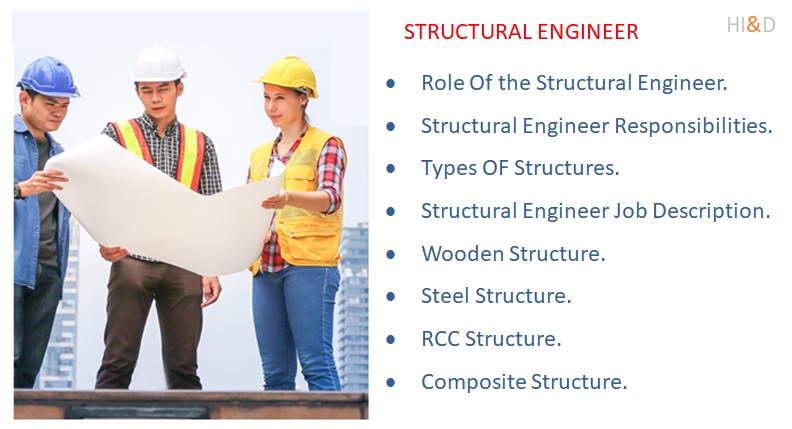The field of structural engineering is a vital field that affects the safety and usability of the built environment. It includes the creation and assessment of structures such as structures, overpasses, and additional facilities, ensuring they can bear numerous loads while serving their designed functions. As our urban areas grow and stretch, the importance of skilled structural engineers grows more apparent, especially when we consider the lessons learned from past failures. These incidents highlight not only the critical role of robust engineering methods but also stimulate innovations that push the boundaries of what is achievable in building.
In exploring the world of structural engineering, we encounter a complex landscape of past developments, advancements, and design hurdles. From understanding the basic tenets that direct engineers to the latest trends defining the path forward of the industry, this article will discuss the importance of structural engineers in modern construction. By analyzing notable structural failures, we can draw valuable lessons that reinforce the need for stringent guidelines and the cooperation between engineers and architects to create safe and sustainable structures. As we navigate through this path, we will also highlight the significant advancements that continue to redefine our cityscapes and boost public safety.

Understanding Structural Engineering along with This Importance
This field of engineering is a vital branch of the engineering discipline that emphasizes the design and analysis of load-bearing structures. It requires comprehending how different forces, including gravity, wind, and seismic activity, influence buildings, bridges, and other constructed facilities. Structural engineers utilize concepts of physics and mathematics to ensure that structures can bear various loads while remaining safe and functional. They collaborate with architects and other professionals to create designs that are not only strong and stable but also aesthetically pleasing.
The importance of structural engineering is crucial. It immediately impacts the safety and longevity of structures, from residential homes to iconic skyscrapers. Failures in structures can have catastrophic consequences, leading to loss of life, property damage, and economic downturns. By employing rigorous analysis and innovative design techniques, structural engineers provide essential solutions that protect public safety and preserve infrastructure integrity. Their role is especially essential in areas prone to natural disasters, where resilient design can make all the difference in protecting communities.
As urban environments continue to change and expand, the demand for skilled structural engineers is increasing. Their expertise is essential in tackling contemporary challenges, such as climate change and the need for sustainable practices. Structural engineers are at the forefront of developing new materials and technologies that improve the durability and efficiency of structures. With the use of advancements like 3D modeling and smart materials, they are well-equipped to address the complexities of modern construction while ensuring safety and sustainability for the next generations.
Insights from Structural Failures and Advancements
Engineering disasters often provide crucial lessons that can shape future engineering practices. One of the most notable lessons learned from the past is the significance of rigorous testing and quality control. Disasters like the collapse of the Tacoma Narrows Bridge showed engineers that aerodynamic effects could be more damaging than anticipated. This led to advancements in comprehending load dynamics and enhancing design methodologies to account for unexpected forces, promoting more robust designs in the future.
Innovations in construction materials and techniques have emerged as direct responses to past failures. For instance, lightweight yet strong materials like reinforced concrete and high-strength steel have changed the way buildings are built. https://structuralengineersurrey.co.uk/ improve security but also enable innovative designs. Moreover, the advancement of CAD and simulation software has revolutionized structural engineering, enabling engineers to see and analyze their designs under different loading scenarios before building begins.
The role of engineering professionals has evolved significantly, driven by insights gained from previous failures. Today, there is a greater emphasis on teamwork, particularly between structural engineers and architects. This collaboration fosters innovative solutions that focus on both design appeal and safety. By drawing on historical lessons, the field of construction engineering continues to improve, focusing on resilience and sustainability, ultimately striving to avert upcoming disasters.
The Fate of Building Engineering and Emerging Trends
The future of building engineering is set for change with the integration of cutting-edge technologies and sustainable practices. Innovations such as artificial intelligence, machine learning, and robotics are transforming how engineers design and analyze structures. Such technologies enhance efficiency, reduce human error, and enable for increasingly intricate designs that were previously unimaginable. As we move forward, structural engineers will more and more rely on these digital tools to optimize safety and performance.
Eco-friendliness is becoming a crucial focus in building engineering, with a increasing emphasis on green building techniques and the use of eco-friendly materials. Engineers are examining options such as recycled materials, energy-efficient designs, and strategies that minimize environmental impact. This trend aligns with international efforts to fight against climate change and emphasizes the role of structural engineers in building structures that are not only safe and functional but also environmentally responsible. The integration of renewable energy sources into building designs is also becoming more common, encouraging self-sufficiency and resilience.
In conclusion, the role of structural engineers in disaster preparedness and recovery is evolving. With the growing frequency of natural disasters, the demand for durable structures is greater than ever. Engineers are creating innovative solutions for earthquake-resistant buildings, waterproof designs, and structures capable of enduring extreme weather conditions. Collaborating with other professionals and applying cutting-edge materials and techniques will be essential as the industry adapts to these issues. As we look to 2025 and beyond, the flexibility and vision of structural engineers will be critical to building safer, more sustainable communities.
